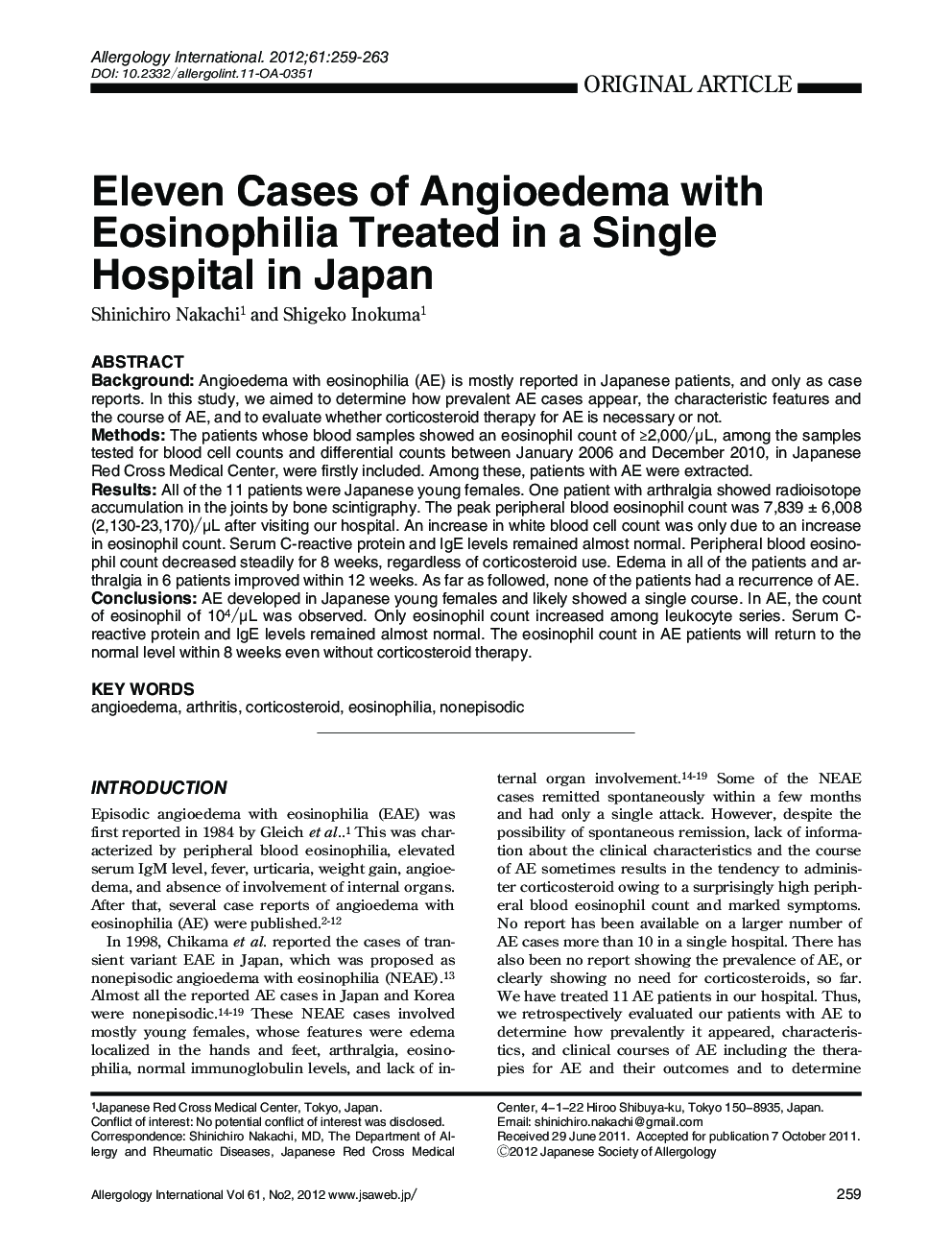| Article ID | Journal | Published Year | Pages | File Type |
|---|---|---|---|---|
| 3340727 | Allergology International | 2012 | 5 Pages |
ABSTRACTBackgroundAngioedema with eosinophilia (AE) is mostly reported in Japanese patients, and only as case reports. In this study, we aimed to determine how prevalent AE cases appear, the characteristic features and the course of AE, and to evaluate whether corticosteroid therapy for AE is necessary or not.MethodsThe patients whose blood samples showed an eosinophil count of ≥ 2,000/μL, among the samples tested for blood cell counts and differential counts between January 2006 and December 2010, in Japanese Red Cross Medical Center, were firstly included. Among these, patients with AE were extracted.ResultsAll of the 11 patients were Japanese young females. One patient with arthralgia showed radioisotope accumulation in the joints by bone scintigraphy. The peak peripheral blood eosinophil count was 7,839 ± 6,008 (2,130-23,170)/μL after visiting our hospital. An increase in white blood cell count was only due to an increase in eosinophil count. Serum C-reactive protein and IgE levels remained almost normal. Peripheral blood eosinophil count decreased steadily for 8 weeks, regardless of corticosteroid use. Edema in all of the patients and arthralgia in 6 patients improved within 12 weeks. As far as followed, none of the patients had a recurrence of AE.ConclusionsAE developed in Japanese young females and likely showed a single course. In AE, the count of eosinophil of 104/μL was observed. Only eosinophil count increased among leukocyte series. Serum C- reactive protein and IgE levels remained almost normal. The eosinophil count in AE patients will return to the normal level within 8 weeks even without corticosteroid therapy.
